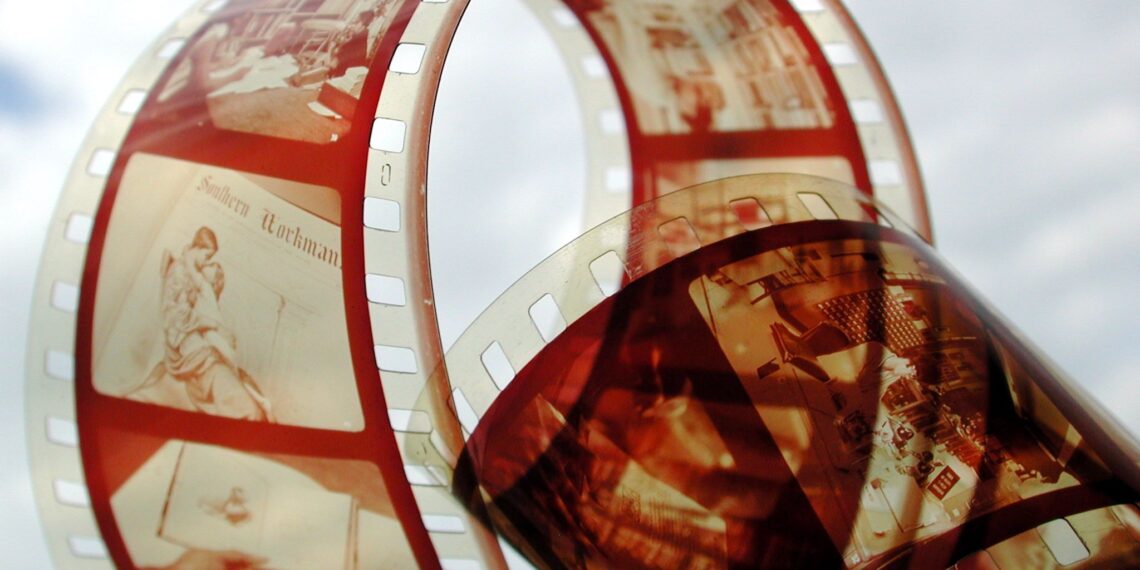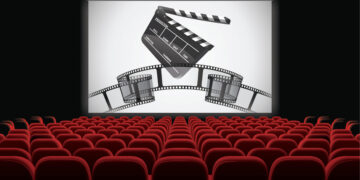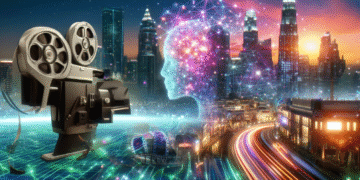The Silent Era: Birth of Cinematic Language and Visual Storytelling
The silent era, roughly from 1890s to the late 1920s, was a period of immense creativity, laying the groundwork for modern cinematic language and visual storytelling techniques that continue to influence filmmaking today.
| Year | Notable Silent Film | Director | Country | Genre |
|---|---|---|---|---|
| 1902 | A Trip to the Moon | Georges Méliès | France | Science Fantasy |
| 1915 | The Birth of a Nation | D.W. Griffith | USA | Drama, War |
| 1920 | The Cabinet of Dr. Caligari | Robert Wiene | Germany | Horror |
| 1925 | Battleship Potemkin | Sergei Eisenstein | Soviet Union | Drama, History |
| 1927 | Metropolis | Fritz Lang | Germany | Science Fiction |
Data source: IMDb, 2024
1. Early Innovations in Visual Storytelling
Early filmmakers experimented with techniques like close-ups, panning shots, and editing to convey narratives without relying on spoken dialogue. Georges Méliès, for example, used elaborate sets and special effects in “A Trip to the Moon” (1902) to create a fantastical world. These innovations demonstrated the power of visual storytelling and set the stage for more complex narratives.
2. The Rise of Film Grammar
As filmmaking evolved, so did the “grammar” of film. Directors like D.W. Griffith pioneered techniques such as parallel editing and cross-cutting to build suspense and emotional impact. These techniques allowed filmmakers to manipulate time and space, creating a more immersive and engaging viewing experience for audiences.
3. The Importance of Intertitles
Since there was no synchronized sound, intertitles were used to convey dialogue, narration, and other essential information. The design and placement of intertitles became an art form in themselves, contributing to the overall visual aesthetic of the film. They served as a crucial bridge between the visual and textual elements of the story.
Hollywood’s Golden Age: The Rise of Studio Systems and Star Power
The Golden Age of Hollywood, roughly spanning from the late 1920s to the late 1960s, witnessed the dominance of studio systems and the unprecedented rise of movie stars. It was a period of immense creativity and significant industrial consolidation.
1. The Studio System: A Production Powerhouse
The studio system was characterized by vertical integration, where studios controlled production, distribution, and exhibition. Major studios like MGM, Paramount, Warner Bros., and RKO Pictures, effectively operated as movie factories. This system allowed for efficient mass production of films, with standardized styles and genres. Directors, writers, and actors were often under exclusive contract, giving studios significant creative control.
2. The Emergence of Star Power
The studio system cultivated the concept of “star power.” Studios carefully crafted and promoted their actors, creating larger-than-life personas. Stars like Clark Gable, Greta Garbo, and Humphrey Bogart became immensely popular, drawing audiences to theaters. Their images were meticulously managed, and their private lives were often subject to studio control. The star system became a powerful marketing tool.
3. Genre Specialization and Formulaic Storytelling
The Golden Age was marked by genre specialization. Studios focused on producing specific types of films, such as musicals, westerns, gangster films, and screwball comedies. Formulaic storytelling was common, providing audiences with familiar narratives and satisfying resolutions. This approach maximized profits and ensured consistent output. However, it also faced criticism for limiting artistic expression.
Innovative Narratives: The Impact of French New Wave on Global Cinema
The French New Wave, or La Nouvelle Vague, revolutionized filmmaking with its rejection of traditional cinematic conventions, leaving an indelible mark on global cinema. Its influence can still be observed in contemporary films.
1. Breaking with Tradition
The French New Wave emerged in the late 1950s as a reaction against the perceived stagnation of mainstream French cinema. Filmmakers like François Truffaut and Jean-Luc Godard challenged established norms by employing unconventional techniques such as jump cuts, improvisation, and direct address to the audience. These stylistic choices disrupted the traditional narrative flow and created a more intimate and engaging viewing experience. The movement emphasized personal expression and auteur theory, asserting the director as the primary creative force behind a film.
2. Influencing Global Filmmakers
The impact of the French New Wave extended far beyond France, inspiring filmmakers around the world. Its emphasis on realism, experimentation, and social commentary resonated with directors seeking to break free from studio constraints and explore new forms of storytelling. From the New Hollywood movement in the United States to the Cinema Novo in Brazil, the French New Wave served as a catalyst for cinematic innovation. Filmmakers adopted its techniques and adapted its themes to reflect their own cultural and political contexts.
3. Lasting Legacy
The French New Wave’s legacy continues to shape contemporary cinema. Its influence can be seen in the independent film movement, which champions originality and artistic vision. Many contemporary filmmakers embrace the movement’s emphasis on realism, naturalism, and character-driven narratives. The use of handheld cameras, location shooting, and non-professional actors, all hallmarks of the French New Wave, remain common in independent films today. The movement’s emphasis on personal expression and challenging conventions has inspired generations of filmmakers to push the boundaries of the medium.
Italian Neorealism: Realism and Social Commentary in Film
Italian Neorealism emerged after World War II, reflecting the harsh realities of post-war Italy through raw and unfiltered storytelling. It moved away from studio-bound productions, embracing location shooting and non-professional actors to capture authentic experiences.
1. Historical Context and Origins
The movement arose from the devastation and moral crisis following World War II and the fall of Fascism. Italian filmmakers sought to break away from the escapist entertainment of the Fascist era, aiming to confront the social and economic struggles of ordinary people. The lack of resources and studio infrastructure also contributed to the adoption of on-location shooting and the use of non-professional actors.
2. Key Characteristics and Style
Neorealist films are characterized by their focus on the lives of the working class and the poor. They often depict themes of poverty, unemployment, and social injustice. Stylistically, they employ long takes, natural lighting, and minimal editing to create a sense of realism. Dialogue is often sparse and understated, allowing the images to convey the emotional weight of the story.
3. Influential Filmmakers and Films
Vittorio De Sica’s Bicycle Thieves (1948) is a quintessential example, portraying the desperate search of a father for his stolen bicycle, which he needs for work. Roberto Rossellini’s Rome, Open City (1945) captured the resistance movement against the Nazi occupation. Luchino Visconti’s La Terra Trema (1948) depicted the exploitation of Sicilian fishermen. These films, among others, established the core tenets of Neorealism.
Blockbuster Phenomenon: Transforming Cinema into a Global Industry
1. The Rise of the High-Concept Film
The blockbuster era saw the emergence of “high-concept” films. These movies are easily marketable due to their simple, compelling premises, often relying on spectacle and special effects. Jaws (1975) is considered a key example, demonstrating the power of a straightforward, thrilling narrative combined with groundbreaking visual effects to attract a wide audience. This formula encouraged studios to invest heavily in similar projects, prioritizing broad appeal over niche interests and paving the way for franchises.
2. Marketing and Distribution Revolution
Blockbusters transformed film marketing. Studios began employing saturation advertising, utilizing television, print, and radio to create massive pre-release hype. Wide release strategies became common, with films opening simultaneously in thousands of theaters to maximize initial box office returns. This shift required significant investment in distribution networks and marketing campaigns, further solidifying the dominance of major studios with the financial resources to execute such strategies.
3. The Impact on Independent Cinema
The blockbuster phenomenon had a complex impact on independent cinema. On one hand, the focus on large-scale productions made it more challenging for smaller, independent films to gain mainstream attention. On the other hand, the success of blockbusters created a demand for alternative content, leading to the growth of independent film festivals and the rise of niche distributors catering to audiences seeking more diverse cinematic experiences.
Digital Transformation: The Technological Revolution in Modern Filmmaking
1. Pre-Production Revolution
Digital tools have revolutionized pre-production. Storyboarding software allows filmmakers to visualize scenes dynamically. 3D modeling and pre-visualization software enable detailed set design and character development before a single frame is shot. Budgeting and scheduling software streamlines the planning process, ensuring projects stay on track. These tools not only enhance efficiency but also foster greater creative collaboration among team members, allowing for more informed decisions and reduced risks during the actual filming process.
2. Shooting and Cinematography
The transition from film to digital cameras has been transformative. Digital cameras offer higher resolution, better low-light performance, and immediate playback, allowing directors to instantly review footage. Lightweight and versatile camera rigs, drones, and gimbals provide dynamic shooting options. Furthermore, digital cinematography allows for greater control over color grading and visual effects in post-production, expanding creative possibilities and streamlining the workflow.
3. Post-Production Powerhouse
Digital post-production has become a powerhouse of creativity. Non-linear editing systems (NLEs) offer unparalleled flexibility in assembling footage. Visual effects (VFX) software enables the creation of stunning and realistic imagery. Digital color grading tools allow for precise control over the look and feel of the film. Sound design and mixing software create immersive audio experiences. These tools have empowered filmmakers to achieve visual and auditory effects that were once impossible or prohibitively expensive.
Q&A
Question 1: What were some key innovations in visual storytelling during the Silent Era (1890s-late 1920s)?
Answer: Early filmmakers experimented with techniques like close-ups, panning shots, and editing to convey narratives without dialogue. Georges Méliès utilized elaborate sets and special effects, as seen in “A Trip to the Moon,” showcasing the power of visual storytelling. Later, directors like D.W. Griffith pioneered parallel editing and cross-cutting to enhance suspense and emotional impact, manipulating time and space for a more immersive experience.
Question 2: How did the Hollywood Studio System impact the creation and promotion of movie stars during the Golden Age?
Answer: The studio system, with its vertical integration, fostered “star power.” Studios meticulously crafted and promoted actors, creating larger-than-life personas. Stars like Clark Gable and Greta Garbo became immensely popular, drawing audiences. Their images and private lives were often controlled by the studios, making the star system a powerful marketing tool.
Question 3: What were the defining characteristics of Italian Neorealism, and how did it differ from previous filmmaking styles?
Answer: Italian Neorealism, emerging post-WWII, reflected the harsh realities of post-war Italy. It rejected studio-bound productions, embracing location shooting and non-professional actors for authenticity. Films focused on working-class lives, poverty, and social injustice, using long takes, natural lighting, and minimal editing to create realism. This contrasted sharply with the escapist entertainment of the Fascist era.
Question 4: How did the French New Wave movement influence global cinema, and what were its key stylistic innovations?
Answer: The French New Wave (late 1950s) challenged traditional conventions, using jump cuts, improvisation, and direct address to the audience. Filmmakers like François Truffaut and Jean-Luc Godard emphasized personal expression and auteur theory. Its influence spread globally, inspiring movements like New Hollywood and Cinema Novo, impacting independent film and the use of handheld cameras, location shooting, and non-professional actors.






